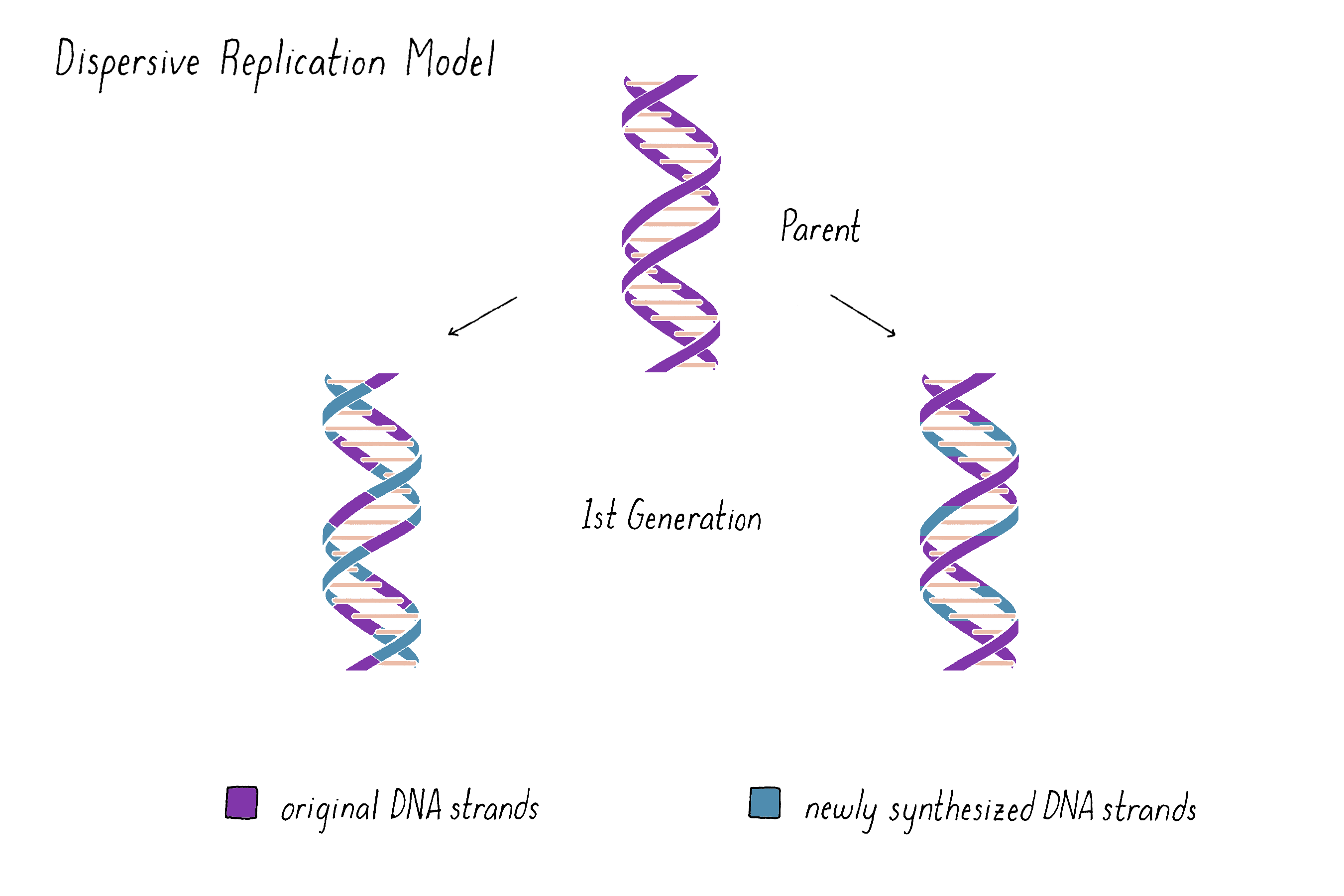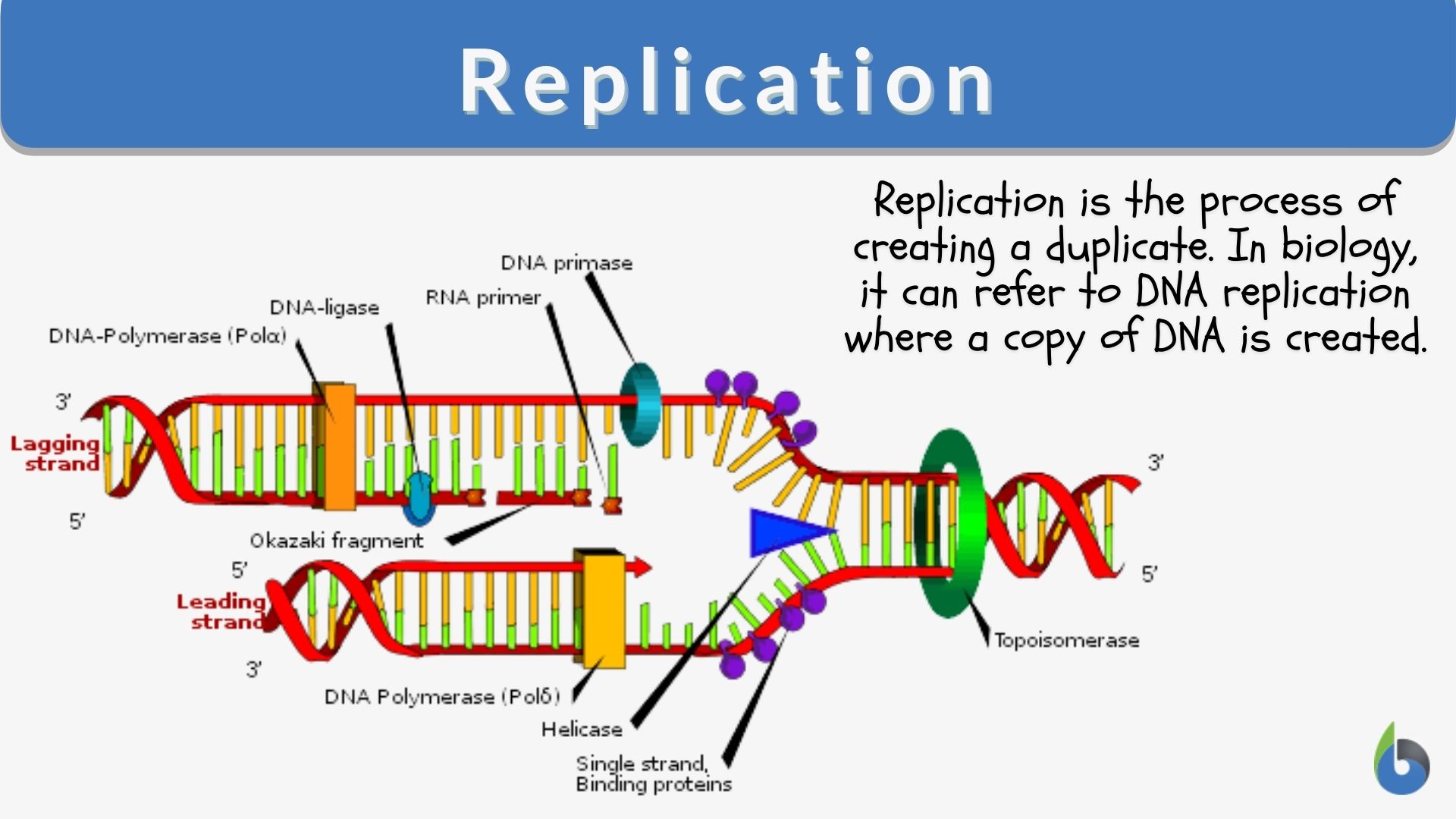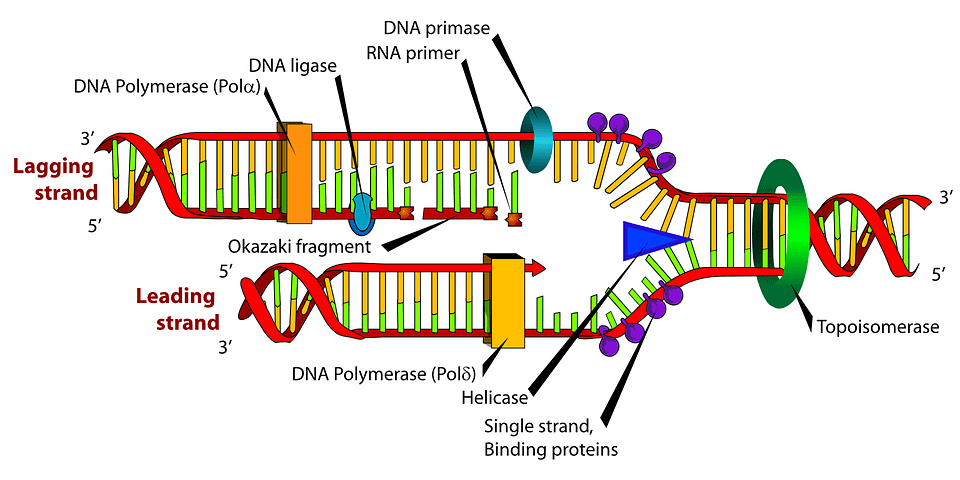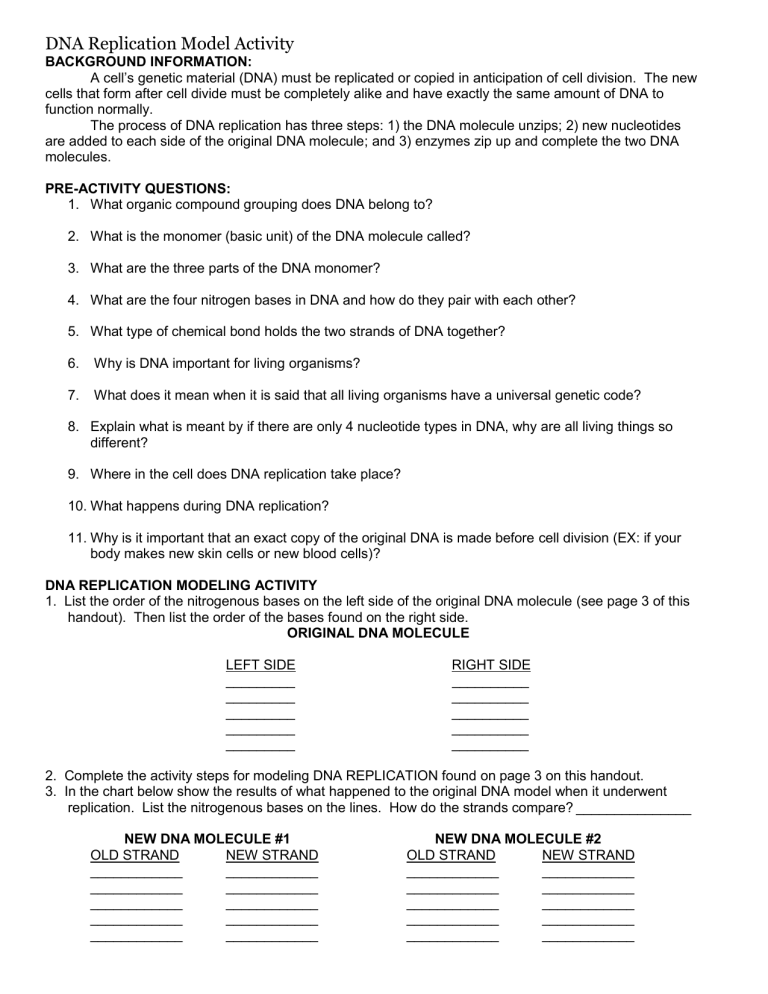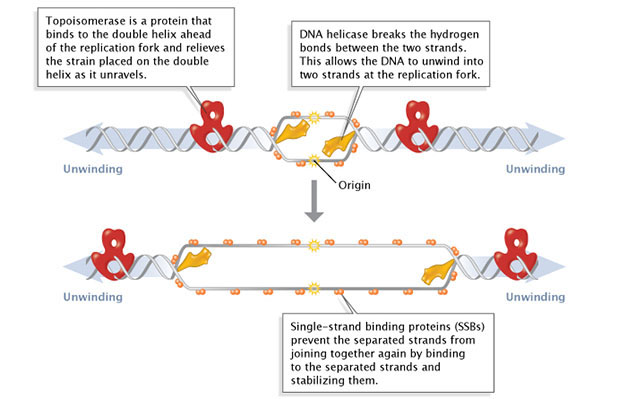DNA replication is the process by which cells duplicate their genetic material in preparation for cell division. This process is essential for the maintenance of genetic information and the proper functioning of organisms.
The DNA replication model describes the mechanisms by which DNA is replicated. The model includes the identification of the components and steps involved in the process, as well as the mechanisms by which errors in DNA replication are corrected.
One of the key components of DNA replication is the enzyme DNA polymerase, which synthesizes new strands of DNA by adding nucleotides to the template strand. DNA polymerase can only add nucleotides to the 3' end of a growing strand, so replication occurs in the 5' to 3' direction.
The process of DNA replication begins when the double helix structure of DNA unwinds and separates into two single strands. This separation is facilitated by an enzyme called helicase, which unwinds the double helix by breaking the hydrogen bonds between the complementary base pairs.
Once the strands have separated, they serve as templates for the synthesis of new strands. The process of synthesizing new strands is called semiconservative replication, because each new double helix contains one original strand and one newly synthesized strand.
As the new strands are synthesized, they are held in place by another enzyme called primase, which synthesizes short RNA primers that serve as starting points for DNA polymerase to add nucleotides. DNA polymerase can then add nucleotides to the 3' end of the primer, synthesizing a new strand of DNA complementary to the template strand.
However, DNA polymerase is not perfect and can make mistakes when adding nucleotides. These mistakes, called mutations, can have serious consequences if they occur in an important gene. To prevent this, cells have a system for correcting errors in DNA replication called proofreading. This process involves the enzyme exonuclease, which can remove incorrectly paired nucleotides from the newly synthesized strand.
In addition to proofreading, cells also have a system for repairing more serious errors in DNA replication called the mismatch repair system. This system recognizes and corrects mismatched base pairs that were not caught by the proofreading process.
Overall, the DNA replication model describes the complex and precise process by which cells duplicate their genetic material. The identification of the components and mechanisms involved in this process has been crucial for our understanding of the molecular basis of heredity and the proper functioning of organisms.



